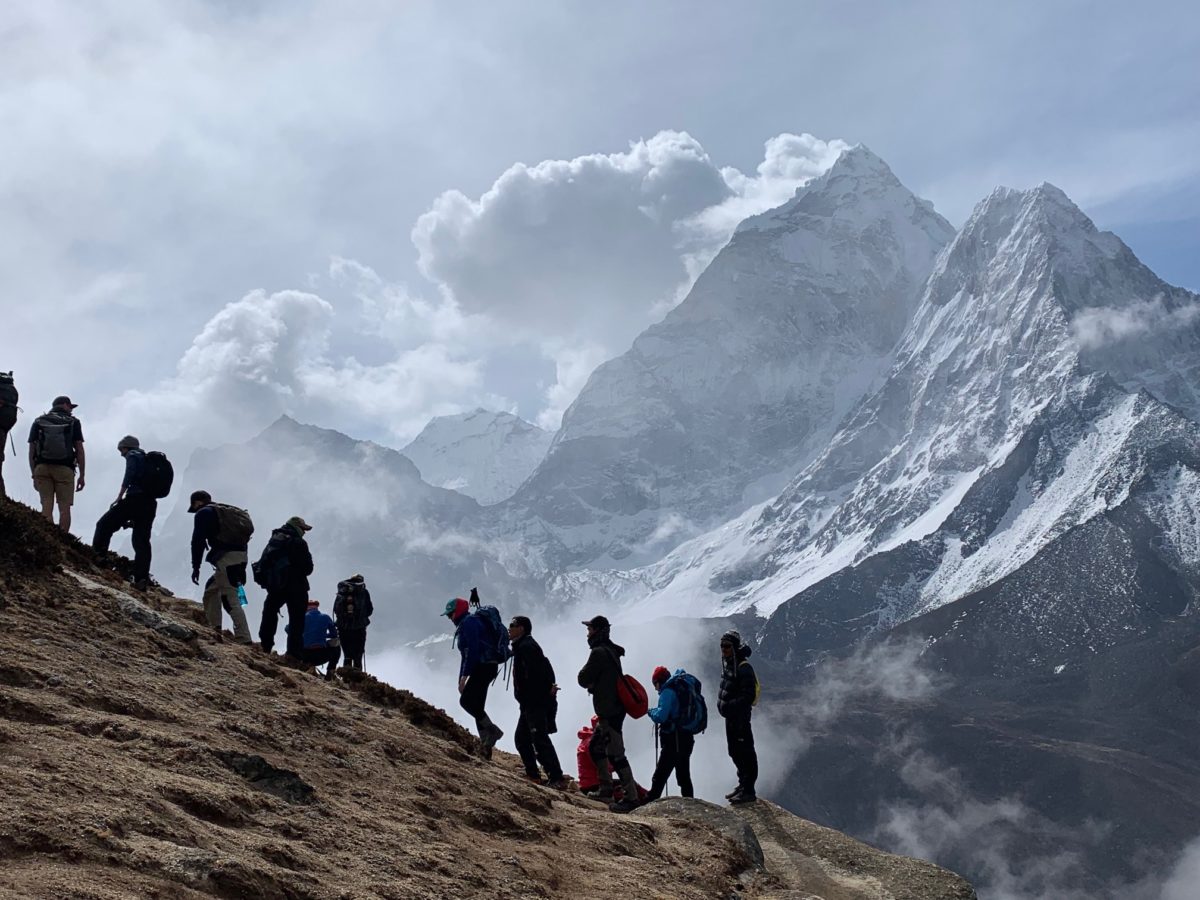How To Protect Your Skin From the Harsh Sun on the EBC Trek

Trekking to Everest Base Camp: What It’s Like. The EBC trek has so much stunning beauty and so incredibly much of a challenge. The higher you go, the less air there is and then – somehow! – the closer to the sun you start to feel; not for everyone on Earth, but for a good chunk of us who call it home and want breathtaking views (which this day we had a bit more than that I think) One major downside to hanging out so much further from sea level in something beautiful like this is something strong enough to steal your very vision right out: The Sun Ultraviolet (UV) rays from the sun are significantly stronger at higher elevations.
The skinny defense does not provide much safety,” and the excessive altitude terrain, inclusive of snow and ice, is a sturdy reflector, a good way to increase the sun’s UV effect. It’s no longer only a reminder of protecting the skin from destructive ultraviolet rays, but it also enables you to ensure your safety and luxury while you trek to the Everest Base Camp Trek. This ultimate Everest packing list will provide you with the knowledge and equipment needed to shield your skin from the sun blasting down above, and ensure a safe, comfortable & enjoyable Everest Base Camp Tour.
The Science of Getting Sun Damage at High Altitude
Moonlight prevalence is increased at high altitude. Why? Good ol’ physics.. that’s why. So, for example, if you ascend one kilometer (3,280 ft), you have about 10-12% more UV when using the valley value. Yep, there’s still way more UV at EBC than in Kathmandu! Plus, the very crisp, dry, wormwood clear sky that does make for good vistas also lets more UV through the atmosphere. But the most dangerous is snow and ice glare. Fresh snow can reflect up to 80 percent of UV radiation, in effect doubling down on your skin from above and below. It’s part of the reason one little harmless sunburn can easily escalate into an epic-peeling scorch on Khumbu, and forget all that– without adequate protection, you’re exposing yourself to imminent skin damage (not to mention premature aging and increased cancer risks).
The first Line of protection: Sunscreen fabric. Is solar-protective garb all you want?
The No. 1 way to defend your skin is to defend it. Sunblock is a crucial part of your safety, but the physical barrier of apparel is your satisfactory defense, and it additionally lasts longer, especially when you are sweating and transferring around all day.
Lengthy-Sleeved Shirts and Pants, you’re going to want to wear lengthy-sleeved shirts and lengthy hiking pants. Look for apparel with an excessive UPF (Ultraviolet Protection Factor) score, which indicates how much UV radiation your apparel screens out.
Look for technical fabrics, which may read polyester or nylon on the tag and generally have a denser weave than cotton and thus block radiation more effectively. Hats: Count wide-brimmed hats among your essentials. It gives your face, ears, and neck only the sun protection they need. Not worth shit in wearing a baseball cap filled with sunlight, your ears and neck bathed in it. A buff, or neck gauntlet, is also great to have in your cool-weather arsenal — it’ll cover and protect the neck and lower face, too. Gloves: You forget and neglect your hands. Some very light gloves, or even full-fingered trekking gloves, can save your hands from the sun.
What to pack for the Everest Base Camp trek Cost — a packing list with smart tips. Packing clothing that has UPF included is smart and will save you many miserable days on the trail.
Sunscreen: The Essential Backup
And at the same time, garments provide a “first line of protection,” approximately any uncovered areas of your body — face, neck, lips, and the back of your fingers — sunscreen is essential.
Tremendous-Spectrum excessive-SPF Sunscreen: practice a huge-spectrum sunscreen with an SPF of at least 30; cross as excessive as you could (50 or better). It’s an intensive-spectrum, because of this, it protects against both UVA and UVB rays. UVA rays are what make your pores and skin age, but it is the UVB rays that really cause you to sunburn. Keep Applying: Sunscreen protects more the more you put on. The standard interval is two hours, but on something like Mount Everest Base Camp, where you’re sweating a lot and the wind is blowing it off every time you stop, the time at which it needs re-application could be much less. Choose a Water/Sweat-Resistant Formula: The best sunscreen is the kind that can stand up to whatever you do. Select a water- and sweat-resistant formula so it doesn’t run while you’re hiking. The recently popular zinc oxide-based mineral sunscreens tend to be a favorite among trekkers — it is believed that they create a strong physical barrier on the skin, which won’t degrade as readily.
Protect your Eyes and give proper care.
Your eyes can get sunburned in a situation called “snow blindness” (photokeratitis) — like a sunburn of the cornea — and it, too, is temporary but painful to your soul.
100% UV-Protection Sunglasses–Slip on your sunglasses that block 99 to 100 percent of UVA and UVB rays. While on the ground covered in snow, pick a pair of glacier glasses with side shields to block peripheral light and reflections. A Backup Pair: You can lose or break sunglasses. You’d probably want to double up on a pair of Horizons, in fact – they’re not something I ever want to ride trail without.
Bottom Line: There is no debating SPF
It’s not vanity that leads us to want to avoid such sun and snow damage; it’s all in the name of playing safe. There’s no foolproof way to shield yourself from the sun, all in or nothing, but cover up with clothing that has additional UPF protection, smear on a high-SPF sunscreen, and don’t skimp on eye coverage, and maybe you can play it safe out here where there isn’t an abundance of friendly. Let me explain – the EBC Trek cost is part of an investment for a tremendous adventure, and such a price to be paid to protect from the sun cannot even compete with what you lose paying AFTER trekking upon your return. A trekker who comes back from a trip with indelible memories but not a souvenir sunburn of raw bands across the face and neck is one who got, I think, all that was going on inside his body during that journey: Not just muscles straining to push through fatigue, but also invisible damage wrought by high-altitude intensity solar radiation.
